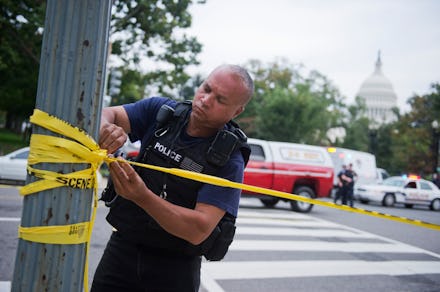U.S. Police Kill a Person With Mental Illness Every 36 Hours

A new investigation has shed some light on what happens in the United States when police and mental illness collide, and the reality is ugly.
Out of the 462 people identified as police shooting victims in 2015 so far by the Washington Post, approximately 124 showed signs of mental illness or emotional crisis. That translates to a shocking rate of one shooting of a mentally ill person every 36 hours, with the full tally including 50 people who were suicidal and 45 situations in which "police were called to help someone get medical treatment, or after the person had tried and failed to get treatment on his own."
According to the Washington Post, there are two primary factors behind the crisis: severely inadequate police training on how to deal with mentally unstable individuals and the fallout of budget cuts to mental health services across the 50 states.
While officers receive days' worth of training on firearms, they spend just a fraction of that time training to deal with mentally unstable individuals. One particular criticism raised by the Washington Post was "most officers are trained to seize control when dealing with an armed suspect, often through stern, shouted commands."
National Alliance on Mental Illness director of media relations Bob Carolla told Mic the Washington Post's final total was a "well-grounded one based on the statistics, but there also have been estimates that have gone up to 50%." Quantifying the true scale of the problem is difficult, Carolla said, due to the lack of any comprehensive national statistics on mental illness and police shootings.
According to the Portland Press Herald, in Santa Clara, California, 41% of incidents involved a suspect who was mentally ill. In Albuquerque, New Mexico, where the Department of Justice recently released a scathing report on officers' use of excessive force, shootings with a "mental health context" rose to 75%.
Too often, no one is doing anything about it: Last year, the Portland Press Herald called the lack of a national strategy to prevent and public acceptance of such shootings "disturbing," noting states had cut more than $4.5 billion in spending on mental health care and services since 2009. These deadly factors combine to make such shootings seem routine, when in reality the United States is a total international outlier in officer-involved homicides.
"Police are often put in the role of first responders to anyone in a mental health situation," Carolla told Mic. "You don't see an EMT being dispatched in that kind of situation."
Carolla said more comprehensive training is a start to addressing the problem, but a better approach would be to implore the police department to work with the local communities to develop "a crisis intervention team approach."
"The route that it then takes is to get them to a mental health or crisis care center instead of taking them to jail," he said. While that "requires established relationships with the mental health community, that's when you're going to see a reduction in tragic incidents."